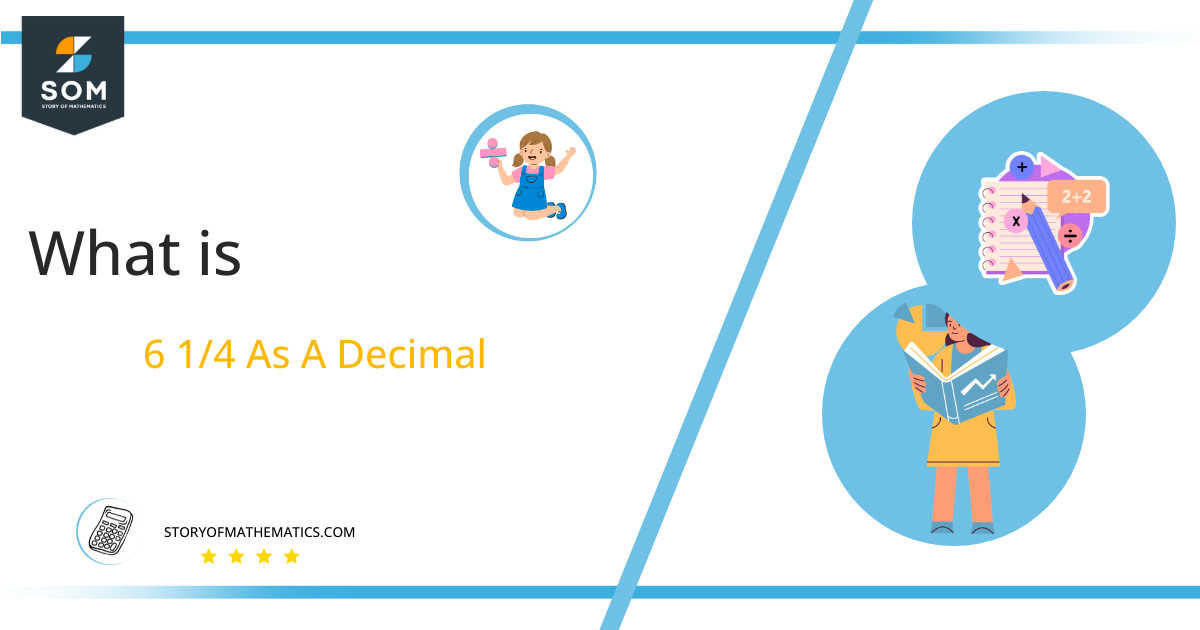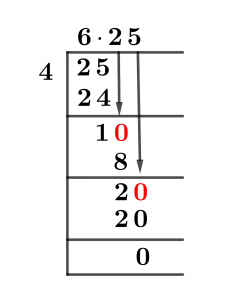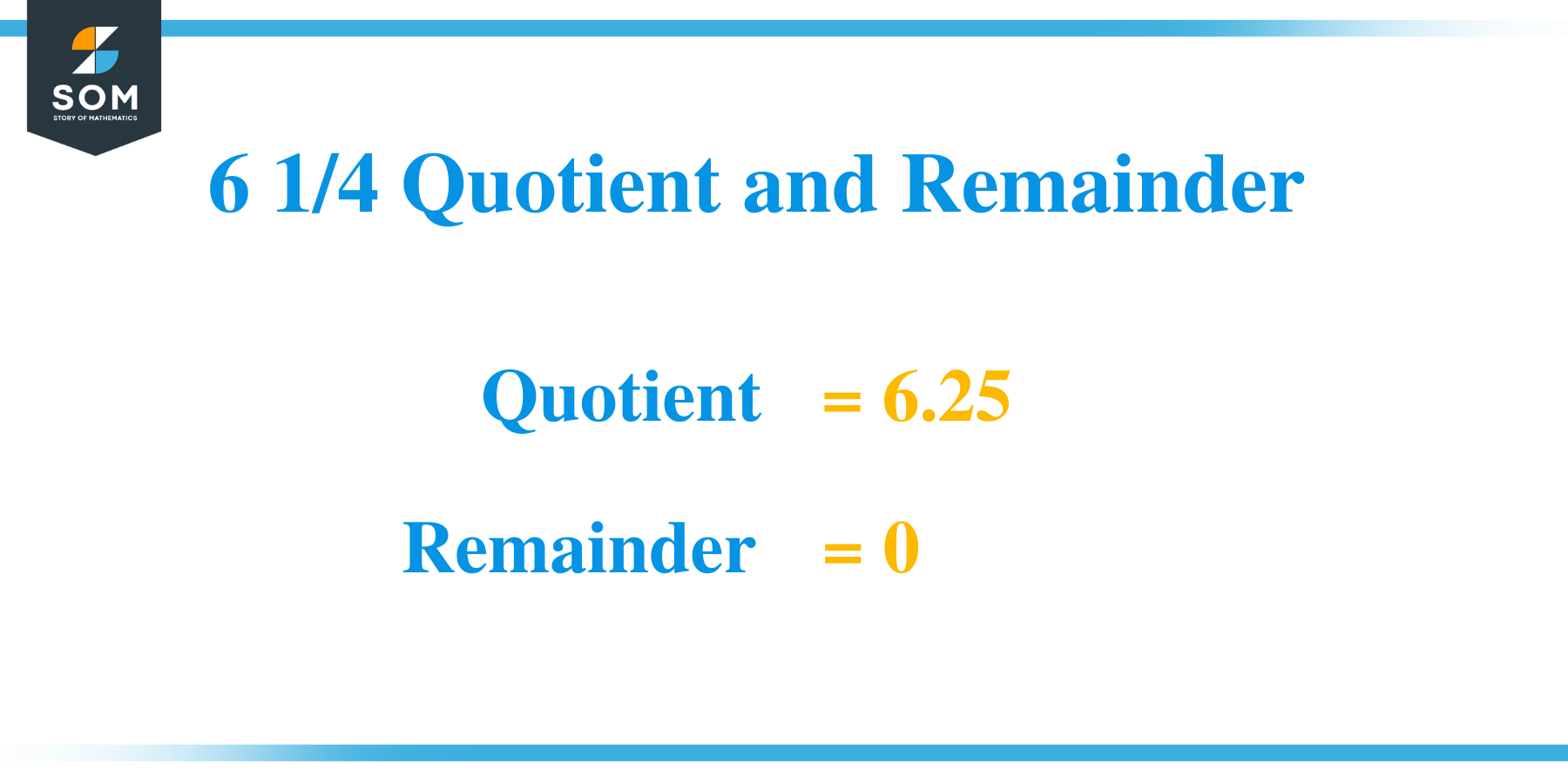What Is 6 1/4 as a Decimal + Solution With Free Steps

The fraction 6 1/4 as a decimal is equal to 6.25.
A Fraction is the ratio of two numbers and is typically expressed as p/q. One of the basic mathematics ideas explains how to divide an object into smaller, equal-sized pieces. The denominator and numerator, the two parts of it, are separated by a line.
A Mixed fraction is generated when a whole number and a proper fraction are represented by 6 and the appropriate fraction 1/4. However, some fractions can’t be solved entirely, leading to decimal values. In this case, we’re interested in finding solutions for those decimal values.
Because decimal values are easier to deal with in these computations than fractional values, fractions are frequently used in mathematical operations after being converted to decimals. This conversion can be performed in several ways, one of which is long division.
The Long Division concept is detailed here.
Solution
Reducing a mixed fraction to an improper fraction is the first step in dealing with it. An improper fraction is produced when the denominator of an improper fraction is multiplied by the quotient or whole number, and the result is further added to the numerator. These operations give the numerator of the desired improper fraction, and its denominator is the same as the denominator of the mixed fraction.
As a result, we conclude that 25/4 is the improper fraction of 6 1/4. Now, it can be expressed as follows using dividend and divisor terms:
Dividend = 25
Divisor = 4
When two numbers are successfully divided, the result is a decimal number. The Quotient is the name given to this result:
Quotient = Dividend $\div$ Divisor = 25 $\div$ 4
Sometimes it isn’t easy to divide two numbers evenly, leaving some amount or value behind called a Remainder.

Figure 1
6 1/4 Long Division Method
The improper fraction for 6 1/4 is written as follows:
25 $\div$ 4
The solution for the long division step in the division of 25 by 4 is as follows:
25 $\div$ 4 $\approx$ 6
Where:
4 x 6 = 24
After this division step, we are left with the remainder:
25 – 24 =1
A decimal point is required to divide 1 by 4 further. Therefore, we multiply 1 by 10 and add a decimal point to the resultant. We must now divide 10 by 4:
10 $\div$ 4 $\approx$ 2
Where:
4 x 2 = 8
Remainder after the second iteration:
10 – 8 = 2
By adding a zero to the right of this 2, it becomes 20, which is then divided by 4:
20 $\div$ 4 = 5
Where:
4 x 5 = 20
Remainder:
20 – 20 = 0
This demonstrates how simplifying the fraction 6 1/4 yields a quotient value of 6.25 with no remainder value.

Images/mathematical drawings are created with GeoGebra.
4/8 as a decimal | Fractions to Decimals List | 6/16 As A Decimal
